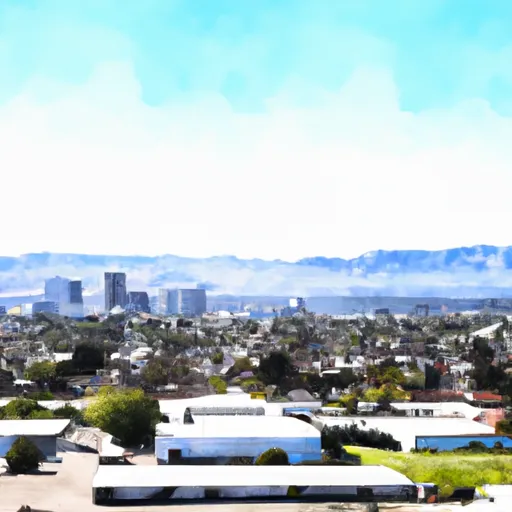-
 Snoflo Premium
Snoflo Premium
Get unlimited access to all our content
With no Ad interruptions! - Start Your Free Trial Login with existing account
Montrose
Eden Index
Climate
9.7
•
Recreation
8.1
•
Community
5.7
•
Safeguard
8.1/10

Montrose, California is a charming neighborhood situated in the foothills of the Verdugo Mountains, known for its pleasant climate and abundant recreational opportunities. The region enjoys a Mediterranean climate, characterized by mild, wet winters and warm, dry summers. Montrose experiences an average annual temperature of around 70°F, making it an inviting place to live or visit year-round.
The hydrology constituents in Montrose are primarily influenced by the nearby Verdugo Wash and La Crescenta-Montrose Creek. They contribute to the overall water flow and ecology of the area. The Verdugo Wash provides a scenic backdrop and is often frequented by outdoor enthusiasts.
Speaking of outdoor recreation, Montrose offers an array of activities for nature lovers. The neighborhood is nestled amidst beautiful natural landscapes, making it an ideal spot for hiking and biking. Nearby parks, including Montrose Community Park and Crescenta Valley Park, provide ample green spaces for picnicking, sports, and relaxation. The Verdugo Mountains offer stunning trails for hikers of all levels, granting breathtaking views of the surrounding area.
In conclusion, Montrose, California boasts an appealing climate, diverse hydrology constituents, and numerous opportunities for outdoor recreation. Whether you are a nature enthusiast, sports lover, or simply seeking a serene environment, Montrose has something for everyone to enjoy.
What is the Eden Index?
The Snoflo Eden Index serves as a comprehensive rating system for regions, evaluating their desirability through a holistic assessment of climate health, outdoor recreation opportunities, and natural disaster risk, acknowledging the profound impact of these factors on livability and well-being.
Climate Health Indicator (CHI): 9.7
Montrose receives approximately
621mm of rain per year,
with humidity levels near 72%
and air temperatures averaging around
18°C.
Montrose has a plant hardyness factor of
10, meaning
plants and agriculture in this region tend to thrive here all year round.
By considering the ideal temperature range, reliable water supplies, clean air, and stable seasonal rain or snowpacks, the Climate Health Indicator (CHI) underscores the significance of a healthy climate as the foundation for quality living.
A healthy climate is paramount for ensuring a high quality of life and livability in a region, fostering both physical well-being and environmental harmony. This can be characterized by ideal temperatures, reliable access to water supplies, clean air, and consistent seasonal rain or snowpacks.
Weather Forecast
Streamflow Conditions
Ventura-San Gabriel Coastal
Area Rivers
Ventura-San Gabriel Coastal
Snowpack Depths
Ventura-San Gabriel Coastal
Reservoir Storage Capacity
Ventura-San Gabriel Coastal
Groundwater Levels
Recreational Opportunity Index (ROI): 8.1
The Recreational Opportunity Index (ROI) recognizes the value of outdoor recreational options, such as parks, hiking trails, camping sites, and fishing spots, while acknowledging that climate plays a pivotal role in ensuring the comfort and consistency of these experiences.
Access to outdoor recreational opportunities, encompassing activities such as parks, hiking, camping, and fishing, is crucial for overall well-being, and the climate plays a pivotal role in enabling and enhancing these experiences, ensuring that individuals can engage in nature-based activities comfortably and consistently.
Camping Areas
| Campground | Campsites | Reservations | Toilets | Showers | Elevation |
|---|---|---|---|---|---|
| Mt. Pacifico | 9 | 7,092 ft | |||
| Los Alamitos Army Military | None | 25 ft | |||
| Gould Mesa | 7 | 1,418 ft | |||
| Chilao | 111 | 5,333 ft | |||
| Millard | 5 | 1,980 ft | |||
| Devore | 6 | 2,914 ft | |||
| Messenger Flats | 10 | 5,793 ft | |||
| Dockweiler Beach RV | 117 | 45 ft | |||
| Monte Cristo | 19 | 3,589 ft | |||
| Oakwilde | 7 | 1,831 ft |
Catastrophe Safeguard Index (CSI):
The Catastrophe Safeguard Index (CSI) recognizes that natural disaster risk, encompassing floods, fires, hurricanes, and tornadoes, can drastically affect safety and the overall appeal of an area.
The level of natural disaster risk in a region significantly affects safety and the overall livability, with climate change amplifying these risks by potentially increasing the frequency and intensity of events like floods, fires, hurricanes, and tornadoes, thereby posing substantial challenges to community resilience and well-being.
Community Resilience Indicator (CRI): 5.7
The Community Resilience Indicator (CRI) recognizes that education, healthcare, and socioeconomics are crucial to the well-being of a region. The CRI acknowledges the profound impact of these elements on residents' overall quality of life. By evaluating educational resources, healthcare accessibility, and economic inclusivity, the index captures the essential aspects that contribute to a thriving community, fostering resident satisfaction, equity, and social cohesion.

